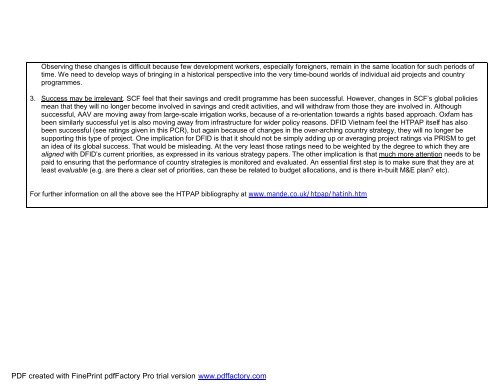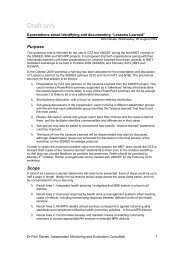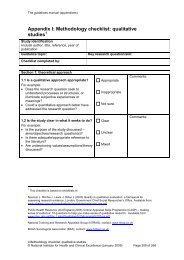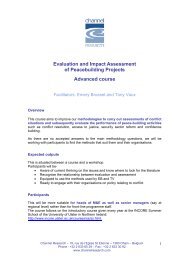DFID 2003 Ha Tinh PCR.pdf - Monitoring and Evaluation NEWS
DFID 2003 Ha Tinh PCR.pdf - Monitoring and Evaluation NEWS
DFID 2003 Ha Tinh PCR.pdf - Monitoring and Evaluation NEWS
Create successful ePaper yourself
Turn your PDF publications into a flip-book with our unique Google optimized e-Paper software.
Observing these changes is difficult because few development workers, especially foreigners, remain in the same location for such periods of<br />
time. We need to develop ways of bringing in a historical perspective into the very time-bound worlds of individual aid projects <strong>and</strong> country<br />
programmes.<br />
3. Success may be irrelevant. SCF feel that their savings <strong>and</strong> credit programme has been successful. However, changes in SCF’s global policies<br />
mean that they will no longer become involved in savings <strong>and</strong> credit activities, <strong>and</strong> will withdraw from those they are involved in. Although<br />
successful, AAV are moving away from large-scale irrigation works, because of a re-orientation towards a rights based approach. Oxfam has<br />
been similarly successful yet is also moving away from infrastructure for wider policy reasons. <strong>DFID</strong> Vietnam feel the HTPAP itself has also<br />
been successful (see ratings given in this <strong>PCR</strong>), but again because of changes in the over-arching country strategy, they will no longer be<br />
supporting this type of project. One implication for <strong>DFID</strong> is that it should not be simply adding up or averaging project ratings via PRISM to get<br />
an idea of its global success. That would be misleading. At the very least those ratings need to be weighted by the degree to which they are<br />
aligned with <strong>DFID</strong>’s current priorities, as expressed in its various strategy papers. The other implication is that much more attention needs to be<br />
paid to ensuring that the performance of country strategies is monitored <strong>and</strong> evaluated. An essential first step is to make sure that they are at<br />
least evaluable (e.g. are there a clear set of priorities, can these be related to budget allocations, <strong>and</strong> is there in-built M&E plan etc).<br />
For further information on all the above see the HTPAP bibliography at www.m<strong>and</strong>e.co.uk/htpap/hatinh.htm<br />
PDF created with FinePrint <strong>pdf</strong>Factory Pro trial version www.<strong>pdf</strong>factory.com









